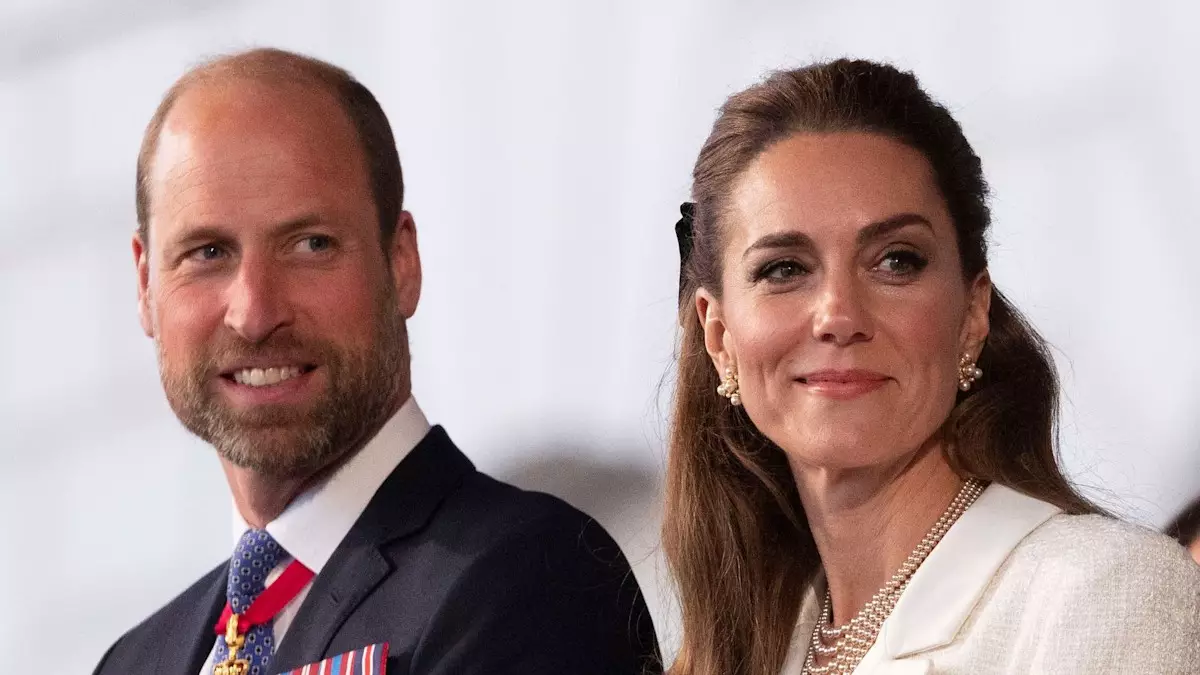Next week, an important event is set to unfold in Glasgow, drawing the attention of both royal watchers and maritime enthusiasts alike. Prince William and Kate, the Prince and Princess of Wales, will steer away from their busy family life for a day to fulfill their royal duties as sponsors of HMS Glasgow. This trip demonstrates not only their commitment to their roles but also their growing engagement with significant national projects. Their presence at the official naming ceremony of this cutting-edge Type 26 anti-submarine frigate highlights a critical intersection of tradition and modernity in the royal family’s contributions to Britain’s naval legacy.
The official naming ceremony—slated to take place at the BAE Systems shipyard—will see the Princess wielding the ceremonial bottle of whisky, a symbolic act steeped in maritime tradition. This gesture serves as a nod to the rich history of naval ceremonies, where ships are often blessed and named, marking the start of their journey. The significance of HMS Glasgow cannot be understated, as it represents the United Kingdom’s focus on enhancing its maritime capabilities and ensuring robust national defense. The modern frigate is designed to protect not only the UK’s nuclear deterrent but also the aircraft carriers that form the backbone of the nation’s sea power.
An Insight into Shipbuilding’s Future
After the traditional ceremony, the royal couple’s itinerary includes a visit to the BAE Systems’ Shipbuilding Academy, an institution shaping the next generation of maritime engineers and shipbuilders. This is more than a public relations opportunity; it’s a moment for the royal family to connect with the future of British shipbuilding. Meeting apprentices and graduates at the academy emphasizes their support for trades and industries that are integral to both the economy and national security. Such engagements underline the importance of passing on skills to the younger generation, particularly in an industry that has historically been a cornerstone of British industry.
This visit is also a strategic move to showcase the breadth of talent within the workforce, as Prince William and Kate will interact with a diverse group of employees from various backgrounds and skills. Their willingness to acknowledge the hard work that goes into shipbuilding acts as a beacon of morale for local communities, whose contributions often remain unseen. Engaging with the soldiers who will eventually man HMS Glasgow further humanizes the royal connection, fostering a sense of solidarity with those who will protect the nation.
Balancing Duty and Family
While the royal couple’s duties keep them occupied, their family remains a focal point in their lives. The timing of this visit coincides with their children, Prince George, Princess Charlotte, and Prince Louis, preparing for half-term holidays. This balance strikes a chord in today’s society, where many face the challenge of juggling work commitments with family life. The royal couple’s willingness to step away from parenting duties—even momentarily—to fulfill their royal responsibilities illustrates a relatable aspect of their lives.
Interestingly, this engagement follows a recent trip to the Scottish Isles—a brief escape that celebrated their 14th wedding anniversary. Known as the Duke and Duchess of Rothesay in Scotland, William and Kate’s affinity for the region reflects their genuine interest in rural communities, as well as the stunning natural beauty that characterizes the Inner Hebrides. Their previous trips display a deeper connection to their heritage and a commitment to understanding the issues faced by these communities, embodying qualities that resonate with many Britons.
Reconnecting with Historical Roots
The royal engagement also serves to modernize the monarchy’s image. By actively participating in events that have historical significance while also engaging with contemporary issues, the Prince and Princess of Wales are seamlessly blending tradition with relevance. Their presence at the HMS Glasgow naming ceremony isn’t merely ceremonial; it’s a potent reminder that the royal family is rooted in history yet keenly aware of modern challenges.
This thoughtful approach to royal duties presents an image of a family committed to their role in advancing the public interest. The incorporation of naval traditions with modern-day issues illustrates a unique commitment to fostering community, honoring history, and supporting the ever-important facets of national security. By understanding the diverse threads that weave together royal responsibilities, the Prince and Princess of Wales continue to strengthen their connection with the people they serve.

